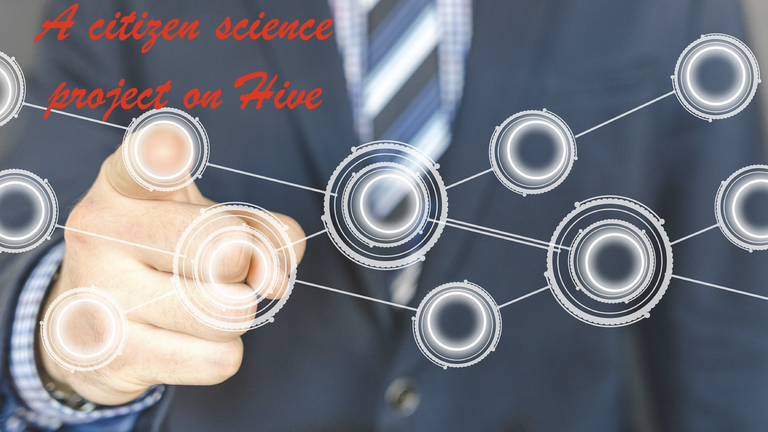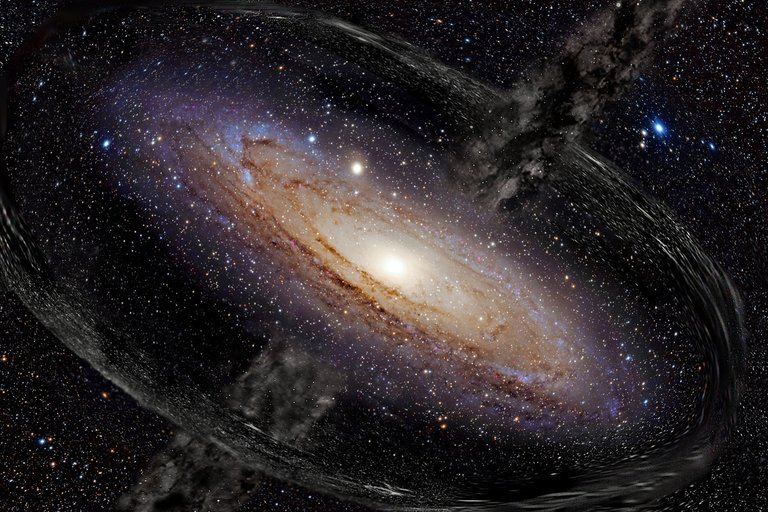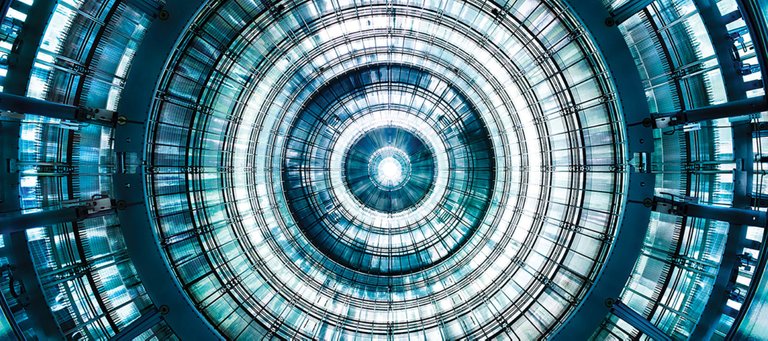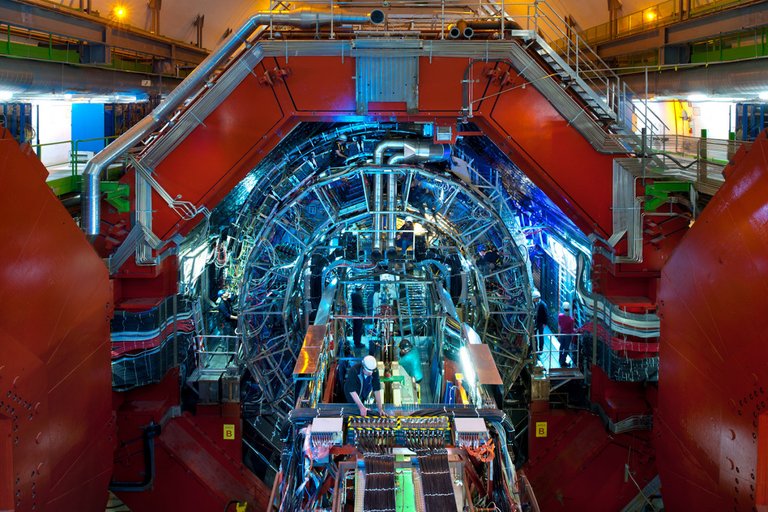It is now a few weeks that I consider the idea of building a community-based participatory research project on Hive. I hesitated a lot before mentioning this, mainly because I was wondering whether such a project could simply work. The idea may indeed sound a bit too crazy to be taken seriously. I however had the chance to discuss it with several authors who regularly pass by my blogs during the last couple of weeks, and I was finally convinced that it may be worthy to bring the full thing a bit more forward.
In contrast to my usual write-ups, I won’t discuss any hot topic in particle physics or any news from my own research today. I will instead detail what I have in mind with a citizen science project on Hive. I will try to convey why I believe that such an idea has a chance to work, for which reasons it may lead to a very nice precedent for our ecosystem and how it could be a very funny experience to run.
Please do not hesitate to give your inputs to the discussion. I definitely value every single opinion, and I will answer as best as I can to any question on it. I am ready to move forward and giving the full thing a try. However, this will happen only if there is an interest from the community. Participating community members are indeed required in order for a community-based participatory research project to have a chance of success.

[Credits: Maxwell Hamilton (CC BY 2.0)]
Origins of the idea and why it could work
The idea and the desire to build a citizen science project on Hive is not new to me. A few years ago, at the time Utopian existed, I have tried to gather community members to help in designing a new (open source) package that could be useful for high-energy physicists. Whereas this project had started well and involved a small team of 4-5 people, it faded out and ended nowhere. The main reason is that I underestimated by a huge factor the time it required from the participants. In addition, quantum field theory concepts were also important, although the project didn’t move enough to get where this would start to matter.
So I failed. Therefore, why coming back to this again now?
The reason is that things have evolved a bit since 2019. In particular, 2 months ago two extremely motivated bachelor students started to work with me on a dark matter project for a few hours per week. They had no background in particle physics and quantum field theory, and they knew only a little about modern physics. Somewhat, they had a not-too-different knowledge of particle physics as most Hive community members. I knew this fact, and I designed their bachelor project by accounting for it.

[Credits: geralt (pixabay)]
After two months of hard work, they started to produce very interesting results. This was achieved by using dedicated tools, and this without knowing that much about the inner details inside these tools (i.e. where quantum field theory hid). In other words, they managed to take part to a scientific project without knowing much about the topic initially. In passing, it is worth mentioning that they used my Hive blogs as a source of information for getting insights about the scientific background relative to their internship.
From this pleasant surprise, I have started to consider proposing something similar to be run on Hive, provided (some) community members are interested in it and have the time. If it worked with my two students, I would like to believe that it could work with anyone who has the motivation and a few hours per week of free time.
Projet details, outcome and requirements
In some of my recents blogs, I discussed neutrino physics quite extensively. In a general introduction, I explained why we know today that the three neutrinos of the Standard Model are massive and mix with each other during their propagation. In a second blog, I detailed how collaborators and I proposed to corner those neutrino mass and mixing parameters in a novel way at CERN’s Large Hadron Collider and its potential successor. The cool novelty of our approach is that we used neutrinoless probes.
In our scientific publication, we demonstrated (for the sake of the proof of concept) that signals containing either two muons or two antimuons could be used to improve the sensitivity of existing and future particle colliders to neutrinos. Despite that we knew that there existed similar channels with two electrons, two positrons, one muon and one electron, etc., we didn’t take the time to study them. Many variations of the original signal hence exist, and their relevance is uncharted territories. This is what I propose to study together on Hive, within the presently proposed community-based participatory research project.
The project includes simulations of the background of the Standard Model relevant for the physics signature considered, as well as simulations of various neutrinoless neutrino signals. Those simulations include high levels of automation, so that there is no need to know much about particle physics to run them on regular computers. For instance, my son managed to simulate the production of 10,000 Higgs boson on my laptop when he was six. I said ‘easy’, didn’t I?
After having achieved those simulations, we will design an analysis to see how the signals considered could be extracted from the overwhelming backgrounds of the Standard Model. Here again, no worries. Very automatic packages exist, so that there is no need to know much about programming. I have unfortunately not yet written any blog about those. This will come in due time.
To make it short, I plan to conduct a novel study of neutrino mass models at the Large Hadron Collider and its successor. With the help of interested community members, we plan to simulate signals and backgrounds of the Standard Model, and design a collider analysis with a good signal-background separation power.

[Credits: KATRIN]
The results will be included in a scientific publication to be submitted to a top-class peer-reviewed journal in particle physics (with the participants to the project as authors). Getting to this stage would be amazing not only to show how non-scientific actors could contribute to state-of-the-art scientific research in particle physics, but also how the Hive ecosystem (and STEMsocial in particular) could provide a thriving atmosphere for citizen science projects. However, there is a long way to go before reaching this point, and for now I only want to be convinced that it is worth starting the whole thing.
This project will require a very important time investment from my side (as for any student who I decide to supervise). I would however be very motivated to drive it, not only for its impact but also for all the associated fun that could emerge from it. After all, I joined Hive many years ago with the purpose of finding a home from where I could share news and knowledge about particle physics with the general audience. This really fits in!
Assuming we move forward, participants will be welcomed to share their progress within the STEMsocial community, which will support their involvement as much as it can. In this way, we could use the chain as a kind of ‘laboratory log book’, although there is not really any laboratory experiment being run here.
Finally, there is not much needed in order to participate to this project, expect for a few hours of time per week and a computer that is not too old. For anything else, I will be there to help and guide.

[Credits: CERN]
TLDR - citizen science particle physics research on Hive
With this blog I propose the idea of building an entire particle physics research project on Hive, to be run together with interested community members. I would like to study neutrino mass models at particle colliders through a new channel, simulate associated signals and backgrounds, and design an analysis assessing the sensitivity of present and future machines to the signal.
Earlier this year, I found out that bachelor students with a similar background in particle physics as most people around here managed to produce interesting results in two months of time. I am therefore convinced that running a community-based particle physics project on Hive could be a success, with beyond-the-state-of-the-art research results to be shared through a dedicated scientific publication. I believe that this would moreover consist of a nice proof of concept for conducting community-based participatory research actions on chain, and be a cool precedent for the Hive ecosystem as a whole.
Of course, we are not there yet. For now I only would like to assess whether it would be worthy to start the whole thing. I hence would like to know whether some community members would be interested in trying this out. There is indeed no way to run a community project without community members that participate to it!
I am obviously available for questions and comments. Please do not hesitate to provide your inputs, raise your concerns or confirm your potential participation.
Have a good week!
I'm actually very excited to see how this will go, it is a very interesting and promising idea.
I didn't express my personal interest in joining when we talked about it before for multiple reasons relating to my personal life, which I won't be talking about in here. But @agmoore is aware about some of it.
I wish I could join in at some point if my situation would somehow allow me to in the near future (although I doubt it). So I hope you understand why I'm opting-out (for now at least).
But other than that, I will be following its developments, and I truly wish you and all the participants the best!
🌼🌼
Thanks for this very sincere message. There will definitely be ways to join the project later on, so that you can definitely feel free to reach me out if you see an open time window in your private life. I fully understand that priorities need to be set, and private life should always come first (I have been through there at some point too). Please don't worry.
Cheers!
This is great to hear. I will reach out to you for sure as soon as it becomes possible for me to participate. (I wish it was only about finding the time as that could've been under my control at least)
Thank you so much for your understanding and the opportunity. As I said, I will definitely keep an eye on its development! :)
For the little details you gave (don't feel obliged to share anything), it sounds very important and should be your highest priority. The rest comes after and this is very fine. We will be there (and who knows, you may end up participating in order to change your mind), ready to welcome you!
Having such project here on hive will be a very good one, but of all am more concerned about the level of contsitency that this will require too.
Honestly it will be a very good initiative
Participants should more or less be consistent at least. Whereas working a few hours per week is expected, skipping a week or two once in a while is probably not blocking at all.
I hope the initiative will take off too. We will know soon.
Ok, I'm interested.
If I remember correctly from your previous post the software mainly uses CPU to compute (and not the GPU via CUDA), for one simulation it uses 100% of the CPU? Multithreading? how long does it take usually to perform one simulation (computer side)? For the storage, does it needs to be on SSD?
It is really great that we are able to count you in (as said in the reply to your comment to my post in French of last week).
In terms of resources, all codes that we will use run on standard CPUs. Multithreading is definitely a plus (4 cores would be comfortable, 8 or 16 very pleasant). Having however only 1 core is not blocking. This just requires more coffee to fill the time that is necessary for the calculations to be done.
Relative to storage, having an SSD or HDD drive does not really matter, as long as space is available. 100 GB is probably a minimum. The real bottleneck (which is not a bottleneck, in fact) is that large intermediate files will have to be used. They are however intermediate, which means temporary. As soon as they are produced, we will run a reconstruction algorithm to make them small. Please don't ask me for details, this is the topic of the post of next week ;)
Cheers!
Ok :)
I'm still following the project and the idea of sharing progression and logs (or link to logs) on Stem community is GREAT because we remain in the spirit of publications and sharing which is the heart of Hive blogs.
I obviously agree with you. I just hope, for now, that the project will just start at all ;)
Hello @lemouth. I will have to read this with care, as always later. I am very interested in a project that fosters participation and collaboration between trained scientists and the willing :))
The results will be included in a scientific publication to be submitted to a top-class peer-reviewed journal in particle physics (with the participants to the project as authors).
This is so exciting! I finally read the article with the care it warrants (yesterday was a trying day...LMAC contest finals and a prompt post for Ink Well).
I hope I can do this. My son often helps me when I have computer difficulty so I think this will be fine. My computer I don't think is more than a year old, although it is not super powerful. Just a run-of-the-mill desktop.
Thanks for confirming being part of this initiative. Let's see how many folks we will be at the end (with @gentleshaid, this gives 3 including me) :)
Sounds quite exciting. Imagine my name on the same paper as Prof. Benjamin. I am willing to be part of this. It will open up something unique about this ecosystem, especially this community. I am optimistic that folks like @clinton19, @mengene, and some others would be interested as well because they have posted content relating to particle physics in the past.
Thanks for signing in! You are the second, after @agmoore who already mentioned her interests last week. Let's see how many we will be in total.
Cheers and thanks to you once again. Your reply made me very happy! :)
Glad, I just settled down to check my notifications, I look forward to being a part of this as well. Please tag me along as it develops. Thanks
That is great. I am happy to see you on board! I will definitely tag you when we will start (please give me a week or so).
Cheers!
Hello dear friend @lemouth, I want to congratulate you on the level at which you want to raise the Hive platform and the STEMSOCIAL community to scientific level, having an article published in a scientific journal and having its basis come from the discussions of specialists from the platform would be an excellent achievement.
I am sure that with your dedication you will be able to achieve it and it will be a great precedent for us in different areas of knowledge to consider doing the same, with the same approach or something similar depending on the circumstances.
I will be on the lookout for every step of a great project, I promise you many successes in this great journey. So long, have a great start to the week.
Glad to read about your support, and I truly hope we will manage to finalise it. I will in any case do as much as I could.
Cheers, and have a great week as well!
It's a great idea! You've hit on many important points for the project to succeed, such as as having members, of course, their motivation (especially intrinsic motivation) and their availability. Also think about establishing a good communication channel.
I would like to participate somehow, although the lack of time is my biggest problem. A few questions:
What would be the role of Hive (the blockchain, the social media, the blogging app) exactly? How can other people see more closely what you would be doing (so they may get stimulated)? Is it enough for members without a physics background to help with computation time and stuff like that?
Update:
Is everything ok, @lemouth!? :)
Apologies for answering your comment so late. The last three days were hectic. I was split between a professional trip and family, as said as a reply to your other comment. I am now back to routine, and am slowly catching up ^^
First I note you in for the project. Then we will see what can be achieved with the time you have. I plan to move on slowly in the beginning, to make sure we will lose no one.
I was actually already thinking about the issue of setting up a communication channel for the project. Initially, I wanted to create a discord group, but the more I think about it, the more I believe this is not the best idea ever. The reason is that I would like people to be able to follow the work from the outside, and possibly join at a later stage. Moreover, the questions of some participant may always trigger questions of others, making the whole process more interactive.
For that reason, I think that we should use the chain. Also, many questions/issues will be common. Therefore, having a proper documentation is good. Such a documentation will be built from the questions and answers of everyone, dynamically throughout the course of the project.
For now, I would consider using the tag #citizenscience (that exists but that is sleepy for months), so that participants could write their report within the STEMsocial community but also within this additional tag (so that they are all collected in the same place). This will allow not only me but anyone to follow progresses in details, and the different posts could be taken as perfect extra places for questions. Regularly, a big summary session may possibly be needed so that anyone external could in a short amount of time catch up.
This being said, nothing is frozen in stone so far, and I am still evaluating what could be the best. The advantage of the option above is that it gives the chain a special role. What do you think?
Finally:
This is precisely the idea. Not only the computation time, but also doing the physics analysis in the second phase of the project :)
Yeah, the idea of using the blockchain to communicate and post some of the project artifacts is interesting. I've heard some people argue that using Discord "kills" the interaction on the chain. Just bear in mind that everything is transparent here. The peakd chat could be useful as well. It's not encrypted though and sometimes it glitches.
I have never used the peakd chat. The problem I see on my side is that this would consist of an extra chat platform, while I try to keep their total amount as small as possible ;)
Kudos to you boss, of course starting a project is one thing and finishing it is another thing,more grease to your elbow boss,I anticipate for for more...
From the replies that I got with this post, I am confident that we will start the project (very soon). Then we will see :)
Jumping on this community project a little late but I'm very much interested in seeing this materialize very soon. Will catch up and follow on the details, and hopefully, provide inputs as well. Count me in. :)
It is never too late. I am adding you to my list! You should receive a notification very soon ;)
Wow, this should be interesting. Looking forward to your progress.
!1UP
Thanks a lot. We will plan to report as much as we can through the course of the project, so that anyone interested could follow from the outside.
Cheers!
That would be great will be looking forward to it, and potentially learn more from you guys!
it's a great idea you might get a great result if you try
I would not be so sure about the results, as this may take months before getting there. But at least the idea is something funny to try out. And I will do it with the few volunteers we have!
The rewards earned on this comment will go directly to the person sharing the post on Twitter as long as they are registered with @poshtoken. Sign up at https://hiveposh.com.
You have received a 1UP from @ivarbjorn!
@stem-curator, @vyb-curator, @pob-curator, @neoxag-curator, @pal-curatorAnd they will bring !PIZZA 🍕 The following @oneup-cartel family members will soon upvote your post:
Learn more about our delegation service to earn daily rewards. Join the family on Discord.
Congratulations @lemouth! You have completed the following achievement on the Hive blockchain and have been rewarded with new badge(s):
Your next target is to reach 78000 upvotes.
You can view your badges on your board and compare yourself to others in the Ranking
If you no longer want to receive notifications, reply to this comment with the word
STOPTo support your work, I also upvoted your post!
Check out the last post from @hivebuzz:
Congratulations @lemouth! You received a personal badge!
Wait until the end of Power Up Day to find out the size of your Power-Bee.
May the Hive Power be with you!
You can view your badges on your board and compare yourself to others in the Ranking
Check out the last post from @hivebuzz:
Thanks for your contribution to the STEMsocial community. Feel free to join us on discord to get to know the rest of us!
Please consider delegating to the @stemsocial account (85% of the curation rewards are returned).
You may also include @stemsocial as a beneficiary of the rewards of this post to get a stronger support.
Your content has been voted as a part of Encouragement program. Keep up the good work!
Use Ecency daily to boost your growth on platform!
Support Ecency
Vote for new Proposal
Delegate HP and earn more